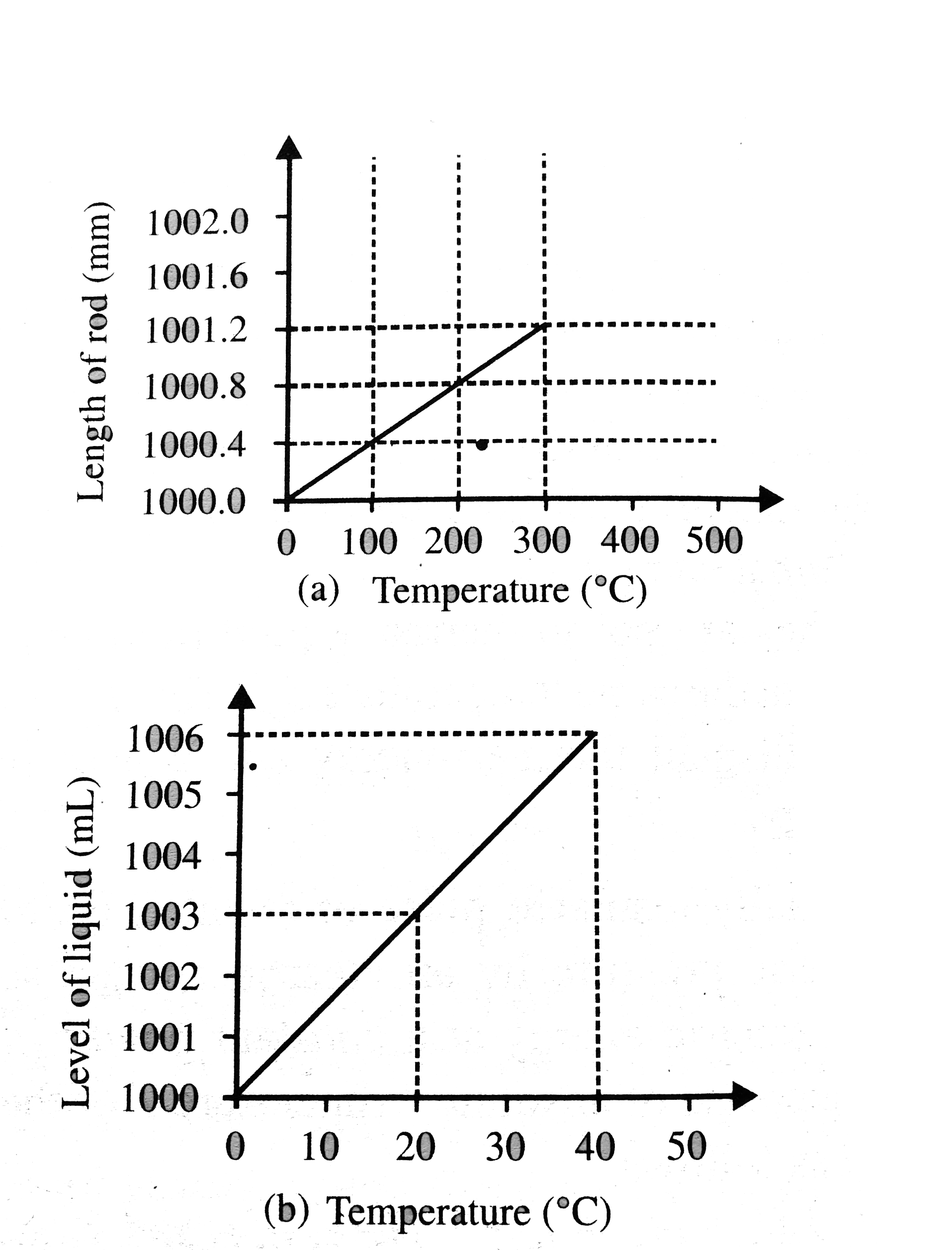The rate of expansion for the same liquid differs greatly in different temperature ranges.
Step-by-Step Solution:
1. Understanding Thermal Expansion:
- Thermal expansion refers to the increase in volume of a substance when it is heated. Different liquids expand at different rates depending on their temperature.
2. Example of Water:
- Water is a common example of a liquid that exhibits varying rates of expansion at different temperatures.
3. Volume Expansion in Different Temperature Ranges:
- For instance, the volume expansion of water between 10°C and 11°C is significantly different from the volume expansion between 93°C and 94°C. This indicates that the rate of expansion is not constant across all temperature ranges.
4. Anomalous Expansion of Water:
- Water exhibits anomalous behavior between 0°C and 4°C, where it actually contracts instead of expanding. This is a unique property of water that is crucial for aquatic life in cold environments.
5. Conclusion:
- The rate of expansion for the same liquid, such as water, varies significantly in different temperature ranges due to its molecular structure and interactions. Understanding these differences is important in various scientific and practical applications.
- Thermal expansion refers to the increase in volume of a substance when it is heated. Different liquids expand at different rates depending on their temperature.
- Water is a common example of a liquid that exhibits varying rates of expansion at different temperatures.
- For instance, the volume expansion of water between 10°C and 11°C is significantly different from the volume expansion between 93°C and 94°C. This indicates that the rate of expansion is not constant across all temperature ranges.
- Water exhibits anomalous behavior between 0°C and 4°C, where it actually contracts instead of expanding. This is a unique property of water that is crucial for aquatic life in cold environments.
- The rate of expansion for the same liquid, such as water, varies significantly in different temperature ranges due to its molecular structure and interactions. Understanding these differences is important in various scientific and practical applications.
Topper's Solved these Questions
- HEAT TRANSFER BOOK - ICSECHAPTER - HEAT TRANSFER EXERCISE - Exercises (Section I) Choose the correct option to fill in the blanks
8 Videos
- HEAT TRANSFER BOOK - ICSECHAPTER - HEAT TRANSFER EXERCISE - Exercises (Section II) Give reason for the following
8 Videos
- HEAT TRANSFER BOOK - ICSECHAPTER - HEAT TRANSFER EXERCISE - Exercises (Section I) Choose the correct option
7 Videos
- FORCE AND PRESSURE BOOK - ICSECHAPTER - FORCE AND PRESSURE EXERCISE - Picture Study
4 Videos
- LIGHT ENERGYBOOK - ICSECHAPTER - LIGHT ENERGYEXERCISE - THEME ASSIGNMENT D. Statements given below are incorrect. Write the correct statements.
7 Videos
Similar Questions
The observed expansion of liquid
View SolutionRate of evaporation is the same for every liquid.
View Solution
The graph of elongation of rod of a substance A with temperature rise is shown if Fig. A liquid B contained in a cylindrical cessel made up of substance A, graduated in millilitres at 0∘C is heated gradually. The readings of the liquid level in the vessel corresponding to different temperatures are shown in the figure. the real volume expansivity of liquid is
View Solution
The graph of elongation of rod of a substance A with temperature rise is shown if Fig. A liquid B contained in a cylindrical cessel made up of substance A, graduated in millilitres at 0∘C is heated gradually. The readings of the liquid level in the vessel corresponding to different temperatures are shown in the figure. the real volume expansivity of liquid is
View SolutionA solid cube is first floating in a liquid. The coefficient of linear expansion of cube is α and the coefficient of volume expansion of liquid is γ. On increasing the temperature of (liquid + cube) system, the cube will sink if

View SolutionIn a vertical U-tube containing a luquid, the two arms are maintained at different temperatures, t1 and t2 . The liquid coplumns in the two arms have heights l1 and l2 respectively. The coefficient of volume expansion of the liquid is equal to

View SolutionA solid whose volume does not change with temperature floats in a liquid. For two different temperatures t1 and t2 of the liqiud, fraction f1 and f2 of the volume of the solid remain submerged in the liquid. The coefficient of volume expansion of the liquid is equal to
View SolutionWrite the difference between heat and temperature .
View SolutionApparent and actual expansion of liquids
View SolutionState true or false. Work done by an ideal gas in adiabatic expansion is less than that in isothermal process (for same temperature range)
View Solution
